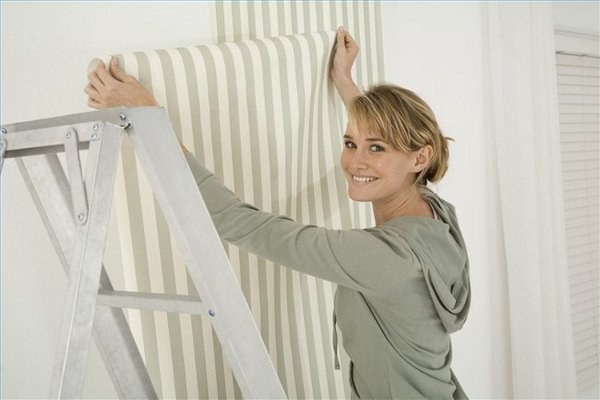The advantages of non-woven Wallpaper
The interlining consists of various polymeric materials in textile and cellulose, which are interconnected. The non-woven Wallpaper is much more durable than any other – they are difficult to break even if you want. They have a high Flammability, resistance to steam, light, heat. It is environmentally friendly and beautiful material. Non-woven Wallpaper often have a pronounced texture and are manufactured in any color with different patterns.
Preparation of walls for gluing non-woven Wallpaper
Before you can start pasting of walls non-woven Wallpaper, you need to prepare the surface – the walls must be smooth and clean. Make sure that there are no bumps, cracks, defects, if there are irregularities, they need to putty. Remove old Wallpaper or other coating. It is desirable to wet the wall so the Wallpaper is easier behind. Non-woven Wallpaper can be pasted on any surface – not only on the plaster, but drywall, concrete, concrete. The walls are preferably primed before gluing special primer.
Note that the non-woven Wallpaper is much easier to remove from the wall – they do not need watering in dry form they are well decoupled from the surface.
When working with non-woven Wallpaper is very important to avoid any movement of Windows must be tightly closed, air conditioning or a split system needs to be switched off, you also cannot turn the fan.
Prepare the Wallpaper for hanging. To start, measure the height of the wall from floor to ceiling and cut coils for the desired band by adding ten centimeters. Buy a special adhesive for this Wallpaper and prepare the required tools. Take care of good lighting job.
How to glue non-woven Wallpaper
Once the primer dries, you can begin to wallpapering. Manufacturers of non-woven Wallpaper is recommended to apply the adhesive not on the finishing material and the walls. Using a level or plumb draw on the wall vertical stripes, under which it will be possible to glue the Wallpaper. Measure the width of the roll and apply with a wide brush glue on the wall to make the strip the same width. Attach the finished cut piece to the wall, spread your hands so not to leave mounds and flatten with a dry cloth or a plastic spatula.
If you did not finish, and on the surface left tubercles with air inside, pierce it with a pin and smooth with your hand or a cloth.
Stripes non-woven Wallpaper correctly to glue back to back only, no need to glue them overlapping each other. If there is a recurring pattern or design, be careful to match. In the corners the Wallpaper glued to the wall adjacent the overlap was about two inches.
